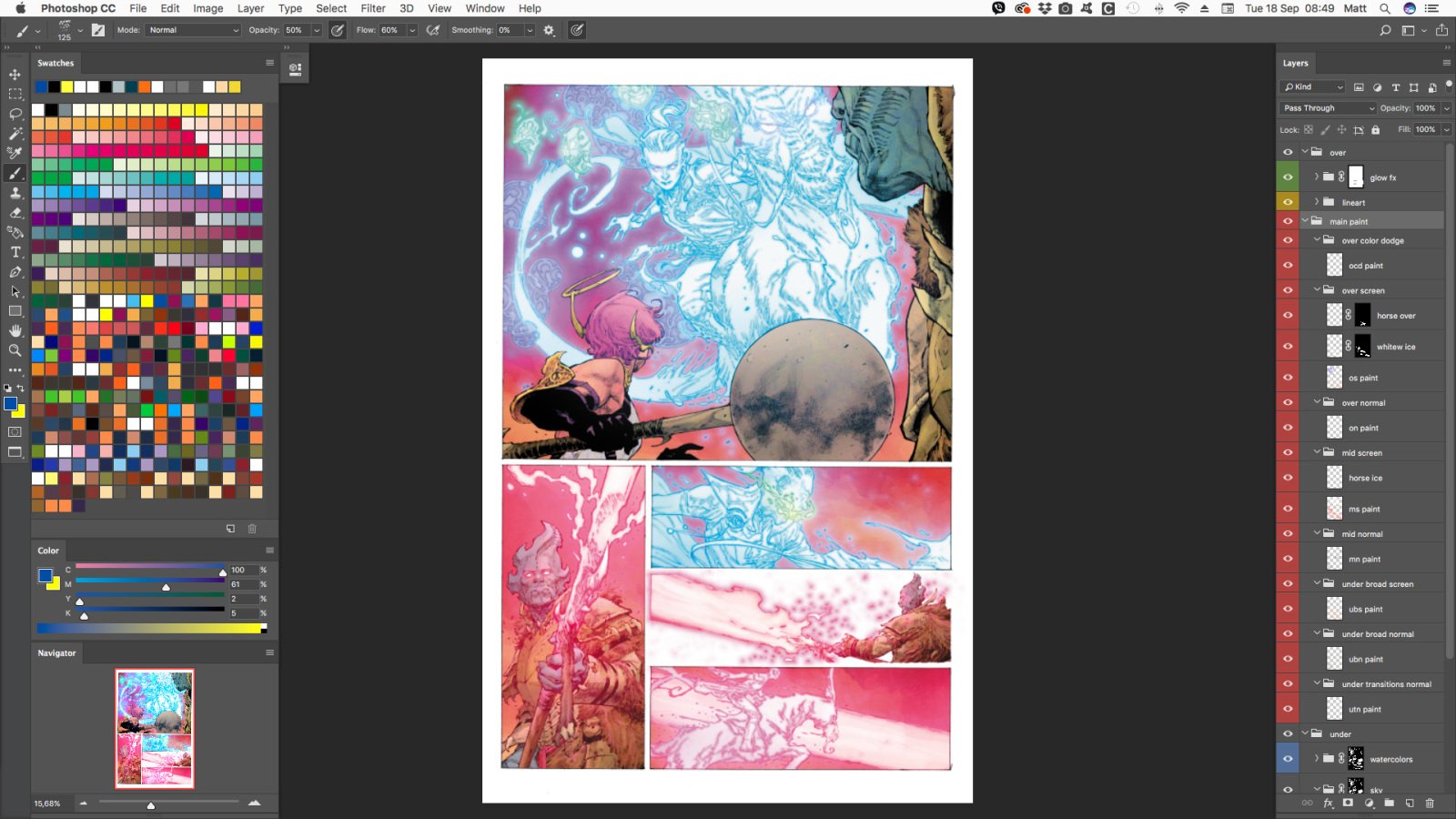Creating Art For Comics Pages On The Web And In Print
The good news for print comics makers is that print comics have a generally standard format. The bad news for print comics is that distribution remains a strong challenge. The good news for digital comics makers is that distribution is easy, but there’s no universal format that fully exploits the potential of the ‘unlimited canvas’.
Overcoming The Print Mindset
The existential crisis for digital comics is the question of how to take advantage of a new medium, without losing the identity of the comics art form. The web can be animated, but comics aren’t animation. The web can be video, but comics aren’t video.
Web comics seemingly ought to exploit some of these advantages, but what are the tools for doing so without crossing over?
Comics aren’t video or animation, but that is not to say that no comic should ever exploit the potential of motion. After all, if one medium represents almost all if not all of the innate characteristics of comics themselves, that medium would have to be the world wide web.
Without question, many of the web’s conventions are intrinsically like comic books. Wherever words and images are juxtaposed sequentially, these are the building blocks of comics, if not comics outright.
So why the learning curve for the comics art form? Probably the reason is that the bridge between the printed page and the digital screen are so vast, that the gulf can seem almost impossible to bridge.
Fundamental Differences In Layout
To be fair, the zenith of pre-digital comics layout occurred during a time when the art form itself was being pushed in nearly meaningless ways, in other words the digital revolution occured at almost the worst possible time for the comics industry. The reason is that artists were pushing questionable layout choices for print at the same time that digital publishing was kicking off. Plainly stated, digital comics might have ‘found their format’ more naturally if the digital age had occured during the same time as the great comic book artists (roughly any time between the 1950’s and 1989).
Instead, comics creators found themselves trying to bridge two mediums at a time when the most recent print references were in decline.
Graphic Design And Web Comics
What digital comics probably need most is an injection of ‘design thinking’ mentality. The potential of comics is unlimited, so the mindset of artists who want to make comics needs to be unlimited as well.
By the time of the mid-1990’s comics industry crash, comics suffered most from artistic ‘cannibalization’. In short the only people making them were people who grew up reading them, and while reading them is good, not bringing any artistic credibility to an art form is bad for the comic one produces, and bad for comics.
Comics illustration became overly stylized, rigid, clunky, and ornate. So did their layout.
As you can imagine, it’s not easy to translate a layout that’s overly stylized, rigid, clunky, and ornate to a web page or mobile web page.
Web Comics Layout Solutions
What’s the solution? As artisans, our strength comes from our journeyman ability to fall back on the fundamentals. Some of these fundamentals are shared between comics, novels, animation, and illustration. The failure of digital comics layout is a failure to employ the fundamentals of the comics art form.
Some primary fundamentals of comics are storytelling, timing, transitions, layout, heirarchy, contrast, repetition, alignment, and proximity.
These are the fundamentals artists use to overcome the challenges of the medium, which is the digital screen.
One of the challenges of the digital screen is that unlike a book, you can’t see everything at every resolution. Also unlike a book, you can’t just stick a bookmark in it and come back to it later. Somehow the content will have to be delivered in a way that readers can digest in segments all during one sitting.
Look at the articles on the web, notice how many of them begin to be labeled “2 Minute Read” or “5 Minute Read”. Digital comics don’t need to put duration alerts on their pages, but to become popular and to be shared widely, comics do need to be easily and quickly digestable, and even more quickly and easily shareable.
Shareability Solutions
Everything we’ve mentioned so far has concerned comics illustration, but it might turn out that the greatest challenge facing digital comics today is a failure to grasp the medium’s potential in writing on the internet.
Serious layout and format problems need to be solved by graphic illustrators working in comics, but the greatest fundamental challenges to achieving prominence for comics on the web, might be the need for a complete rethinking of the way that comics are written.






